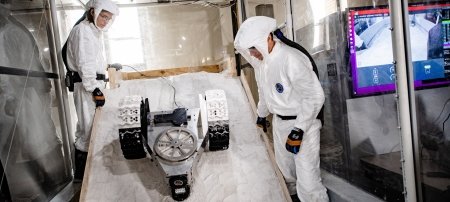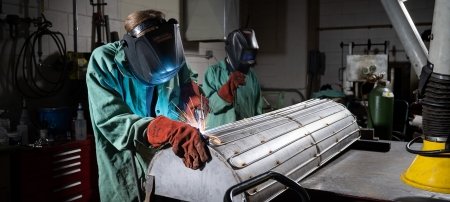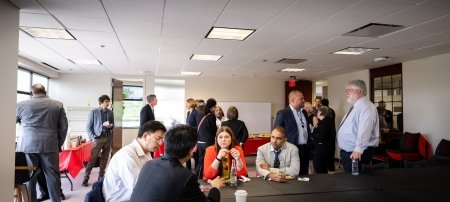Michigan Tech’s thought leaders glimpse into the University’s future. Bruce Seely, dean of the College of Sciences and Arts (CSA), contemplates the future of the University by looking at its past.
In a bit of format reversal, we asked Dean Seely—a historian of technology—what he would have gotten right if asked for his insights on the University’s future in 2006.
A few things, says Seely. First, he anticipated that Michigan Tech would undergo a significant demographic transition in the faculty ranks—and it did. In CSA alone, more than 130 tenure-track faculty were hired over the past 10 years, with some departments experiencing over 75 percent turnover. Of the new faculty, 53 were women.
Second, 10 years ago, Seely says he felt Michigan Tech needed to attract more external funding—which meant developing a stronger research agenda in the life sciences, especially in the areas of bio-medical research.
“I began as dean of the college with a sense that Michigan Tech could not afford to be a bit player when it came to securing external funding from the National Institutes of Health (NIH).”
The results of those efforts show great progress, as the College secured $9.2 million from NIH between 2008 and July of this year, via proposals submitted by 19 different investigators. Seely says the relationship between the procurement of external funding and the University’s future success cannot be overstated.
Third, Seely says the somewhat recent interdisciplinary collaboration between the sciences and arts to create STEAM fields is something he saw coming. And it’s something he views as vital to the University’s future.
“Every program in CSA fits under the banner of a technological university,” Seely says, “from visual and performing arts to biological sciences, from physics to social sciences.”
Going forward, he says, “we must ensure the College’s programs are no longer identified as ‘best-kept secrets.’ Adding arts to the discussion is an enormously important step, since technological universities like Michigan Tech are perfectly positioned to build the bridges.”
When asked to predict a discipline or field of study within the sciences and arts that may take center stage within the next ten years, Seely hesitates. “Prognostication is not a strong suit of mine,” he says. “I’d like to think that historians, and not just historians of technology, had learned that adopting new technologies just for the sake of novelty is never a winning strategy. We know that the digitization of the world is all but certain to continue—but whether those efforts truly serve learning and the advancement of knowledge is not guaranteed.”
That said, Seely says he is “certain that geographic information systems (GIS) will play an ever-larger role in helping us grasp and understand the spatial dimensions of our world.”
Tools like GIS, along with certain aspects of big data, offer an ability to visualize information in powerful ways in almost every field of knowledge, not just in the social sciences.
“I believe that GIS, like statistics and computing technology, is a necessary tool that every graduate of the University should know how to use.”
He says that while universities are known as sources of innovation, they can also be places that are slow to change.
“Sometimes that more deliberate pace of academia can be useful and valuable. It can allow us the luxury of asking what we are doing in advance of taking a leap into the fast-flowing river of modern technology.”
Looking forward, Seely believes the University is heading in the right direction. “I will continue to claim, as I have for several years, that Michigan Tech now has the best faculty it has ever had.”
Michigan Technological University is an R1 public research university founded in 1885 in Houghton, and is home to nearly 7,500 students from more than 60 countries around the world. Consistently ranked among the best universities in the country for return on investment, Michigan's flagship technological university offers more than 120 undergraduate and graduate degree programs in science and technology, engineering, computing, forestry, business, health professions, humanities, mathematics, social sciences, and the arts. The rural campus is situated just miles from Lake Superior in Michigan's Upper Peninsula, offering year-round opportunities for outdoor adventure.






Comments